- Physalis: Key Facts and Overview
- The Origin and History of Physalis Plants
- Types and Varieties of Physalis Plants
- Cultivation and Care of Physalis Plants
- In conclusion
- Types and Varieties of Physalis
- 1. Physalis peruviana
- 2. Physalis ixocarpa
- 3. Physalis pubescens
- 4. Physalis angulata
- 5. Physalis pruinosa
- 6. Physalis alkekengi
- 7. Physalis heterophylla
- 8. Physalis philadelphica
- Cultivation Techniques for Physalis
- Site Selection
- Planting
- Watering
- Fertilizing
- Pruning
- Pest and Disease Control
- Harvesting
- Planting Physalis: Step-by-Step Guide
- 1. Choose the Right Spot
- 2. Prepare the Soil
- 3. Start Seeds Indoors
- 4. Transplanting the Seedlings
- 5. Watering and Mulching
- 6. Provide Support
- 7. Fertilizing
- 8. Harvesting
- Physalis Care: Essential Tips and Recommendations
- 1. Planting and Soil Requirements
- 2. Sunlight Requirements
- 3. Watering
- 4. Fertilization
- 5. Trellising and Support
- 6. Pruning
- 7. Pest and Disease Control
- 8. Harvesting
- 9. Storing Physalis Fruits
- 10. Crop Rotation
- Pests and Diseases Affecting Physalis Plants
- Pests
- Diseases
- Harvesting and Storing Physalis
- Harvesting Physalis
- Storing Physalis
- Popular Uses for Physalis in Cooking and Medicine
- Cooking Uses
- Medicinal Uses
- Questions and Answers:
- What is physalis?
- How do you plant physalis?
- What types of physalis are there?
- When is the best time to harvest physalis?
- What are the care requirements for physalis plants?
- Can physalis be grown in containers?
- Are physalis plants prone to any pests or diseases?
- Videos: Physalis Growing Guide (Chinese lanterns) by GardenersHQ
Physalis, also known as “ground cherry” or “Cape gooseberry,” is a unique fruit that belongs to the nightshade family. Native to the Americas, physalis has gained popularity all over the world due to its sweet-tart flavor and unique husked appearance. This article will guide you through the cultivation, planting, and care of physalis, as well as introduce you to different types and varieties of this fascinating fruit.
If you’re interested in growing physalis in your garden or on your balcony, you’ll be happy to know that it is a relatively low-maintenance plant. Physalis can be grown from seeds or transplants and requires a sunny location with well-drained soil. It is important to provide support for physalis plants, as they can grow quite tall and heavy. Regular watering and occasional fertilization will help the plant thrive and produce a bountiful harvest.
There are several types of physalis, each with its own unique characteristics and uses. The most common type is Physalis peruviana, also known as “goldenberry” or “Inca berry.” This variety produces small, golden fruits that are enclosed in a papery husk. Another popular type is Physalis philadelphica, or “tomatillo.” Tomatillos have a tart flavor and are often used in Mexican cuisine to make salsa and sauces.
In addition to these well-known varieties, there are also lesser-known types of physalis that are worth exploring. Physalis angulata, also known as “cutleaf ground cherry,” has a slightly more acidic flavor and is often used in desserts and jams. Physalis pruinosa, or “strawberry ground cherry,” has a sweet strawberry-like flavor and is often eaten fresh or used in pies and tarts.
So, whether you’re a gardening enthusiast looking for a new plant to grow, or a food lover interested in trying new flavors, physalis is definitely worth considering. With its beautiful husked appearance, versatile flavor, and relatively easy cultivation, physalis is sure to become a favorite in your garden and kitchen.
Physalis: Key Facts and Overview
Physalis, commonly known as ground cherries or cape gooseberries, is a genus of flowering plants in the nightshade family, Solanaceae. These small, round fruits are encased in a papery husk, similar to a lantern, which gives them their unique appearance.
Origin: Physalis plants are native to the Americas and have been cultivated for centuries. They are believed to have originated in South America and were later spread to other parts of the world through trade and exploration.
Types and Varieties: There are several species of Physalis, each with its own unique characteristics. Some of the most popular types include Physalis peruviana (also known as Cape Gooseberry), Physalis philadelphica (known as Tomatillo), and Physalis angulata (known as Cutleaf Groundcherry).
Cultivation: Physalis plants are relatively easy to grow, making them a popular choice for home gardeners. They prefer a well-draining soil and thrive in full sun. They can be grown from seeds or transplants and require regular watering and fertilization.
Harvesting: Physalis fruits are ready for harvest when the husk turns papery and starts to dry out. They can be gently plucked from the plant or allowed to fall naturally. It is important to handle the fruits with care to avoid damaging the delicate husk.
Uses: Physalis fruits have a sweet and tangy flavor, similar to a mix of pineapple and tomato. They can be eaten fresh or used in a variety of culinary preparations, including jams, jellies, pies, and desserts. They are also commonly used as a decorative element in salads and cocktails.
Health Benefits: Physalis fruits are rich in vitamins and minerals, such as vitamin C, vitamin A, and iron. They also contain antioxidants, which help protect the body against free radicals and support overall health.
| Key Facts | Overview |
|---|---|
| Family | Solanaceae |
| Common Names | Ground cherries, Cape gooseberries |
| Origin | Americas |
| Types | Physalis peruviana, Physalis philadelphica, Physalis angulata |
| Cultivation | Well-draining soil, full sun, regular watering and fertilization |
| Harvesting | When husk turns papery and starts to dry out |
| Uses | Fresh consumption, jams, jellies, pies, desserts, salads, cocktails |
| Health Benefits | Rich in vitamins and minerals, antioxidants for overall health |
The Origin and History of Physalis Plants
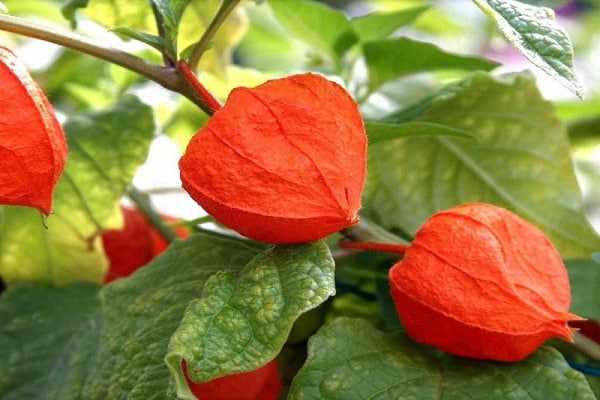
The Physalis plant, also known as the Cape gooseberry or groundcherry, belongs to the Solanaceae family, which includes other popular plants like tomatoes, potatoes, and peppers. Physalis plants are native to the Americas and can be found growing in various regions, from southern Canada to Argentina.
The history of Physalis plants can be traced back thousands of years. They have been cultivated by indigenous peoples in Central and South America for centuries, mainly for their edible fruits. The early Aztecs and Incas regarded Physalis plants as sacred and used them in various religious ceremonies.
The first records of Physalis plants in Europe date back to the 18th century when they were brought back by explorers and traders. They gained popularity as an ornamental plant due to their attractive papery husks and bright orange fruits. However, it wasn’t until the 20th century that Physalis plants started to be grown commercially for their fruits.
Today, Physalis plants are cultivated in many countries around the world, including the United States, South Africa, China, and Australia. They are grown both for commercial purposes and in home gardens. The fruits of Physalis plants are used in various culinary applications, including jams, pies, desserts, and even in savory dishes.
Physalis plants have also gained popularity for their medicinal properties. They are believed to have anti-inflammatory, antioxidant, and immune-boosting effects. The leaves and stems of Physalis plants are used in traditional medicine to treat various ailments, including respiratory conditions and liver problems.
Types and Varieties of Physalis Plants
There are several types and varieties of Physalis plants, each with its own unique characteristics. Some of the most popular ones include:
- Physalis peruviana: Also known as the Cape gooseberry or goldenberry, this is the most common type of Physalis plant. It produces small, round fruits enclosed in a papery husk.
- Physalis ixocarpa: Commonly known as the Mexican husk tomato or tomatillo, this type of Physalis plant is primarily grown for its green, tomato-like fruits. It is a key ingredient in Mexican cuisine.
- Physalis angulata: Also known as the cut-leaf groundcherry, this species of Physalis plant has distinctive deeply lobed leaves. It produces small, yellow fruits.
Cultivation and Care of Physalis Plants
Physalis plants are relatively easy to cultivate and care for, making them a popular choice for home gardeners. Here are some key tips for successful cultivation:
- Choose a well-draining soil rich in organic matter.
- Physalis plants prefer full sun but can tolerate some shade.
- Start seeds indoors 6-8 weeks before the last frost or sow them directly in the garden after the danger of frost has passed.
- Plant the seeds or seedlings about 2-3 feet apart to allow for adequate air circulation.
- Water regularly, keeping the soil evenly moist but not waterlogged.
- Fertilize with a balanced fertilizer every 4-6 weeks during the growing season.
- Prune the plants as needed to remove dead or diseased foliage.
- Harvest the ripe fruits by gently removing them from the husk.
In conclusion
Physalis plants have a rich history and are valued for their beautiful fruits, culinary uses, and medicinal properties. Whether you’re looking to grow them for their tasty fruits or as an ornamental addition to your garden, Physalis plants are sure to add a touch of vibrant color and unique flavor to your life.
Types and Varieties of Physalis
1. Physalis peruviana
Physalis peruviana, also known as Cape gooseberry, is one of the most common types of physalis. It is native to South America and is widely cultivated for its sweet, tangy fruits. The fruits are encased in a papery husk and are often used in desserts, jams, and sauces. Physalis peruviana plants are typically compact and require full sun and well-draining soil.
2. Physalis ixocarpa
Physalis ixocarpa, commonly known as tomatillo, is another popular variety of physalis. Unlike other physalis species, tomatillos are primarily grown for their green, tomato-like fruits, which are used in Mexican cuisine. The fruits are enclosed in a papery husk and have a tart, citrusy flavor. Physalis ixocarpa plants require full sun and well-drained soil and can reach heights of up to 1.2 meters.
3. Physalis pubescens
Physalis pubescens, also known as husk tomato or strawberry tomato, is a smaller variety of physalis that produces small, red or yellow fruits. The fruits are enclosed in a papery husk and have a sweet and tangy flavor. Physalis pubescens plants are generally sprawling and can reach heights of up to 60cm. They prefer full sun and well-draining soil and are often used in salads, salsas, and desserts.
4. Physalis angulata
Physalis angulata, commonly known as cutleaf groundcherry or balloon cherry, is a species of physalis that is native to tropical regions of the Americas. It is often considered a weed but is also cultivated for its edible fruits. The fruits are small, round, and enclosed in a papery husk. Physalis angulata plants can grow up to 1.5 meters in height and prefer full sun and well-draining soil.
5. Physalis pruinosa
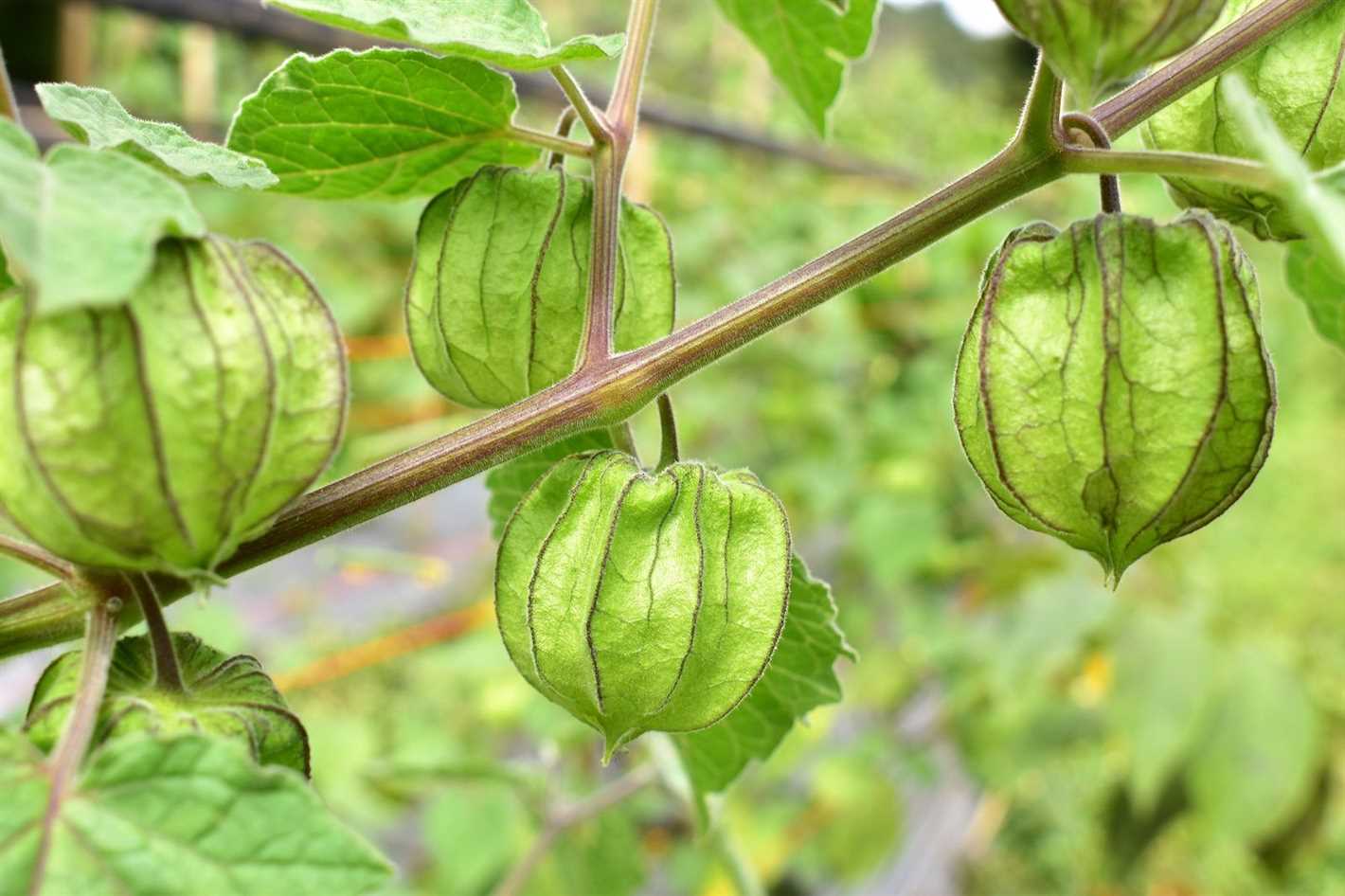
Physalis pruinosa, also known as ground cherry or husk cherry, is a species of physalis that is native to the Americas. It is cultivated for its small, orange or yellow fruits, which are enclosed in a papery husk. The fruits have a sweet and tangy flavor and can be eaten fresh or used in jams, pies, and other desserts. Physalis pruinosa plants typically reach heights of up to 60cm and require full sun and well-draining soil.
6. Physalis alkekengi
Physalis alkekengi, commonly known as Chinese lantern or strawberry groundcherry, is a species of physalis that is grown primarily for its decorative orange or red lantern-like fruits. The fruits are not typically eaten, but the plant is cultivated for its ornamental value. Physalis alkekengi plants can reach heights of up to 60cm and prefer full sun and well-draining soil. They are often used in floral arrangements and dried flower crafts.
7. Physalis heterophylla
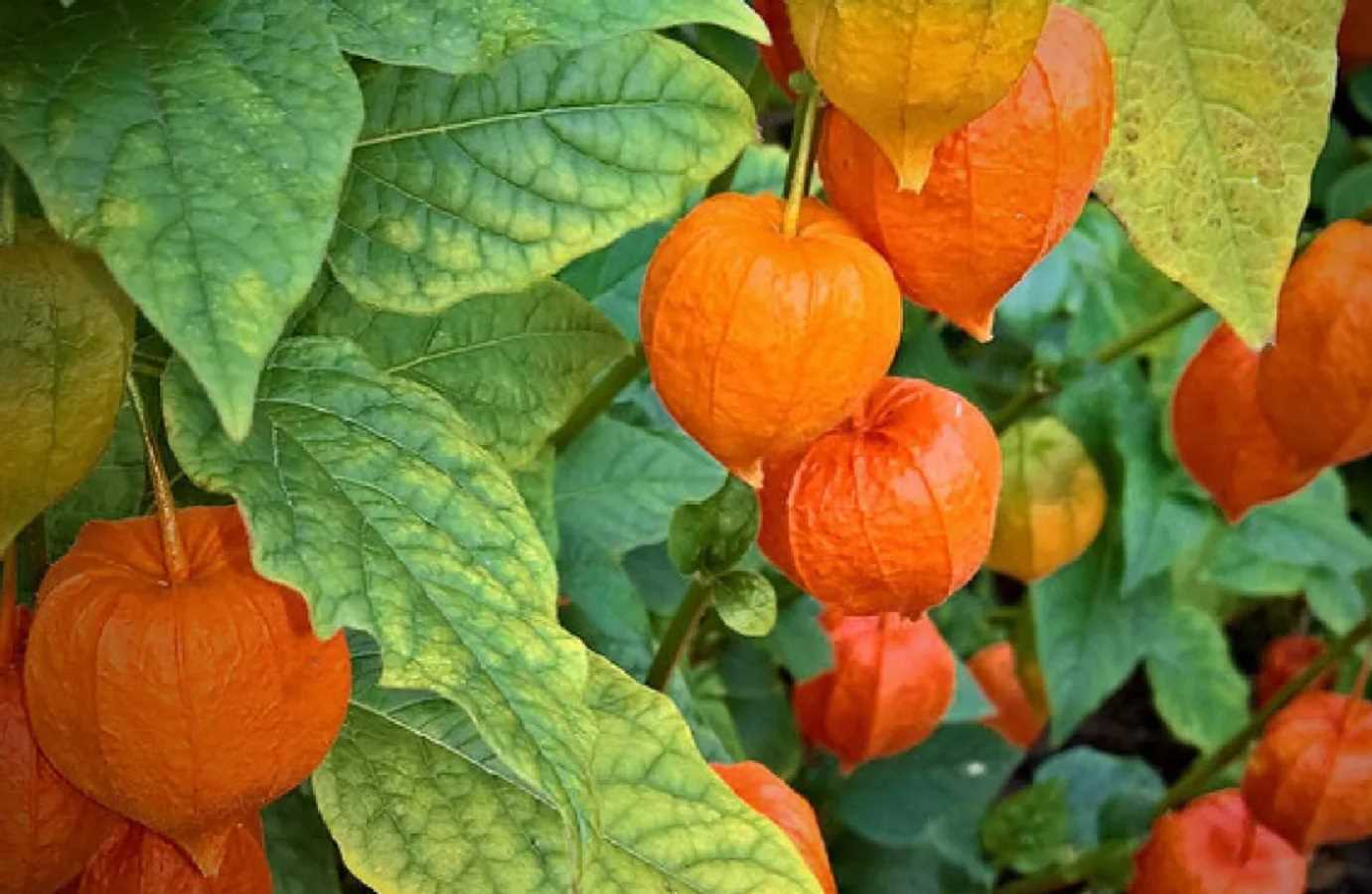
Physalis heterophylla, also known as clammy groundcherry or sticky groundcherry, is a species of physalis that is native to North and Central America. It is considered a weed in some areas but is also cultivated for its edible fruits. The fruits are small, round, and enclosed in a papery husk. Physalis heterophylla plants can reach heights of up to 60cm and prefer full sun and well-draining soil.
8. Physalis philadelphica
Physalis philadelphica, commonly known as Mexican groundcherry or tomatillo, is a species of physalis that is grown for its green, tomato-like fruits. The fruits are enclosed in a papery husk and have a tart, citrusy flavor. Physalis philadelphica plants require full sun and well-drained soil and can reach heights of up to 1.2 meters.
Cultivation Techniques for Physalis
Physalis, also known as Cape Gooseberry or Ground Cherry, is a small fruit with a unique taste and attractive appearance. Growing physalis in your garden can be a rewarding experience, but it requires specific cultivation techniques to ensure optimal growth and fruit production.
Site Selection
Physalis plants prefer well-drained soil with a pH range of 6.0 to 7.5. Choose a sunny location with at least 6 hours of direct sunlight each day. Avoid planting physalis in low-lying areas that may accumulate water and cause root rot.
Planting
Physalis can be started from seeds or transplants. If starting from seeds, sow them indoors 6-8 weeks before the last frost date. Transplants can be planted outdoors after the danger of frost has passed. Dig a hole slightly larger than the root ball and place the transplant in the hole. Firm the soil gently around the base of the plant. Space the plants 2-3 feet apart to allow for good air circulation.
Watering
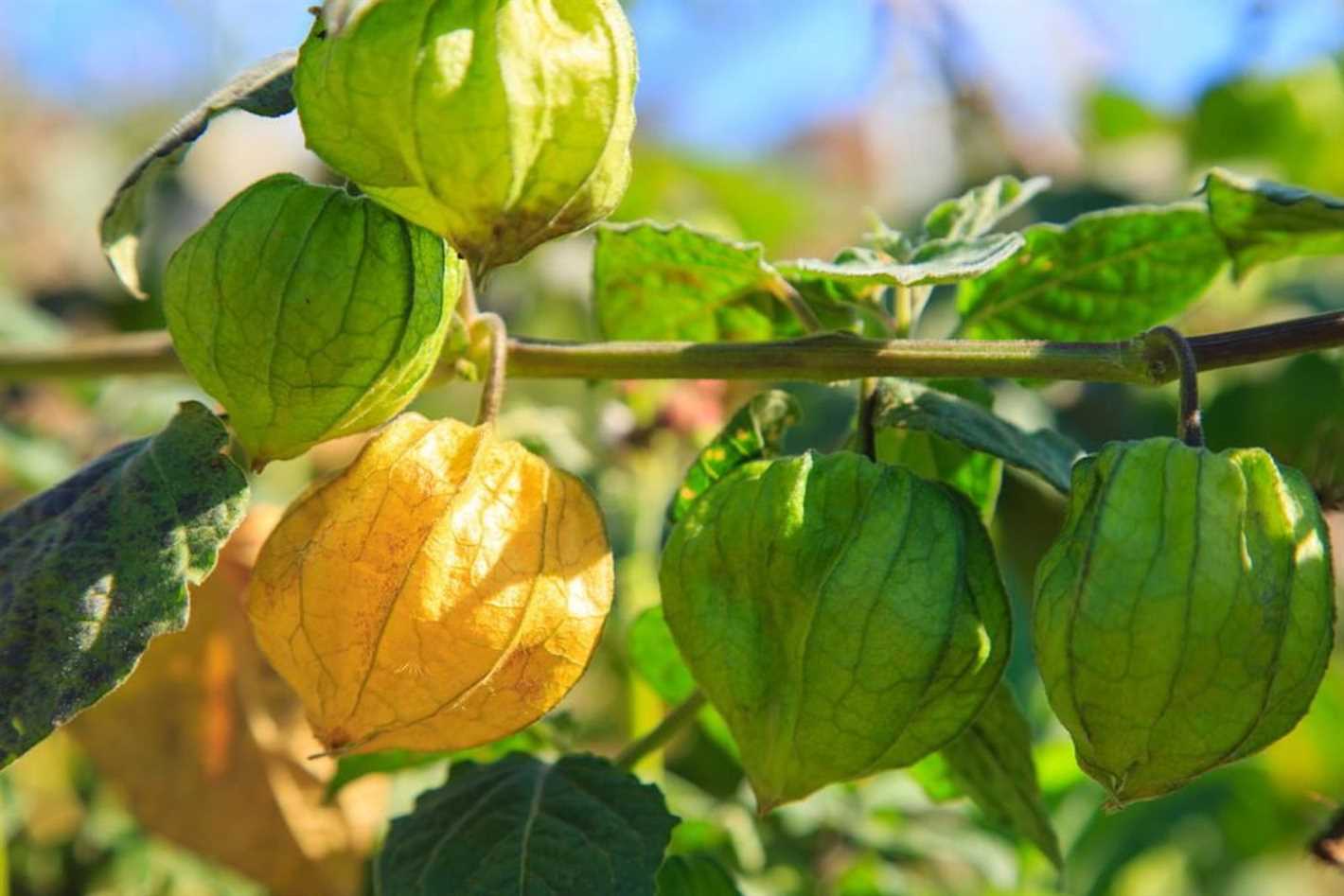
Physalis plants require regular watering, especially during dry periods. Water deeply once or twice a week, ensuring that the soil is evenly moist but not waterlogged. Mulching around the plants can help retain moisture and prevent weed growth.
Fertilizing
Apply a balanced fertilizer, such as a 10-10-10, at planting time and again 4-6 weeks later. Avoid over-fertilizing, as this can lead to excessive vegetative growth and reduced fruit production.
Pruning
Physalis plants have a sprawling growth habit and can benefit from pruning to promote better air circulation and reduce the risk of disease. Remove any dead or damaged branches, as well as any excessive growth that may be blocking sunlight from reaching the lower parts of the plant.
Pest and Disease Control
Physalis plants are relatively resistant to pests and diseases. However, common pests such as aphids, whiteflies, and spider mites can occasionally be a problem. Monitor your plants regularly and take appropriate action if you notice any infestations. In terms of diseases, physalis plants are susceptible to fungal infections such as powdery mildew and gray mold. Proper plant spacing, good air circulation, and avoid overhead watering can help prevent these diseases.
Harvesting
Physalis fruits are ripe and ready to harvest when their husks turn brown and dry. Gently remove the fruits from the plant, being careful not to damage the husks. Husked physalis can be stored in a cool, dry place for several weeks. Alternatively, the fruits can be eaten fresh or used in various recipes.
Planting Physalis: Step-by-Step Guide
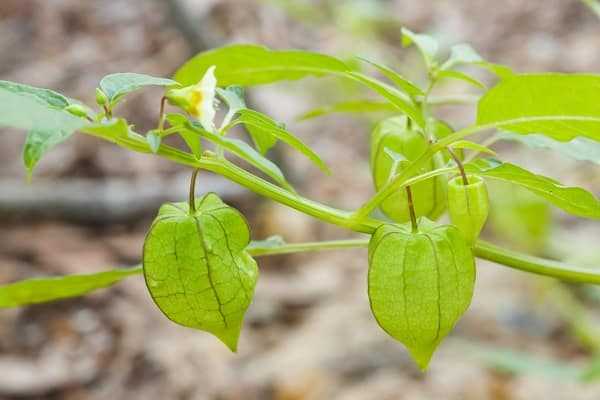
Physalis, also known as ground cherry or Cape gooseberry, is a popular fruit plant that is grown for its delicious and nutritious berries. If you want to start growing physalis in your garden, here is a step-by-step guide to help you get started.
1. Choose the Right Spot
Physalis plants prefer full sun, so choose a spot in your garden that receives at least 6-8 hours of direct sunlight per day. The soil should be well-draining and rich in organic matter. Physalis plants can tolerate a wide range of soil pH, but a slightly acidic to neutral pH is ideal (pH 6.0-7.0).
2. Prepare the Soil
Before planting physalis, prepare the soil by removing any weeds or grass from the area. Loosen the soil using a garden fork or a tiller to a depth of about 8-10 inches. Incorporate organic matter such as compost or well-rotted manure into the soil to improve its fertility and texture.
3. Start Seeds Indoors
Physalis plants can be started from seeds indoors, about 6-8 weeks before the last frost date in your area. Sow the seeds in seed trays or small pots filled with well-draining seed starting mix. Keep the soil moist and place the trays/pots in a warm location with temperatures around 70°F (21°C).
4. Transplanting the Seedlings
Once the danger of frost has passed and the seedlings have reached a height of about 6 inches, they are ready to be transplanted outdoors. Space the plants about 2-3 feet apart to allow for proper air circulation and growth. Dig holes that are slightly larger than the containers the seedlings are in, and gently transplant the seedlings into the holes.
5. Watering and Mulching
Physalis plants require regular watering to keep the soil evenly moist, especially during dry spells. Water the plants deeply, but avoid overwatering as this can lead to root rot. Apply a layer of mulch around the plants to help retain soil moisture and suppress weed growth.
6. Provide Support
Physalis plants have a sprawling growth habit and may need some support to keep them upright. Consider using stakes or cages to support the plants and prevent them from falling over. This will also make it easier to harvest the fruits.
7. Fertilizing
Physalis plants benefit from regular feeding with a balanced fertilizer. Apply a slow-release fertilizer or a liquid fertilizer every 4-6 weeks during the growing season. Avoid over-fertilizing, as this can lead to excessive foliage growth at the expense of fruit production.
8. Harvesting
Physalis fruits are ready to be harvested when they have fully ripened and turned from green to a golden or orange color. Gently twist or cut the fruits from the plant, being careful not to damage the plant or the surrounding fruits. The fruits can be eaten fresh, used in desserts, or preserved by canning or making jams and jellies.
Following these steps will help you successfully plant physalis in your garden and enjoy a bountiful harvest of this delicious fruit.
Physalis Care: Essential Tips and Recommendations
1. Planting and Soil Requirements
Physalis plants prefer well-draining soil with a pH level between 6.0 and 7.0. It is best to prepare the soil by adding organic matter, such as compost, to improve its fertility and drainage.
2. Sunlight Requirements
Physalis plants thrive in full sunlight, so it is essential to choose a location that receives at least 6 hours of direct sunlight per day. Insufficient sunlight can result in weak growth and reduced fruit production.
3. Watering
Physalis plants need regular watering, especially during dry periods. Water deeply and evenly to ensure the roots receive enough moisture. Avoid overwatering, as it can lead to root rot. Mulching can help retain soil moisture and prevent weed growth.
4. Fertilization
Provide regular fertilization to ensure optimal growth and fruit production. Use a balanced fertilizer, following the manufacturer’s instructions for application rates. Avoid excessive nitrogen, as it can lead to excessive foliage growth at the expense of fruit production.
5. Trellising and Support
Physalis plants tend to sprawl and can benefit from trellising or support. Consider using stakes or cages to keep the plants upright, prevent them from sprawling on the ground, and make harvesting easier.
6. Pruning
Prune Physalis plants to promote air circulation and remove any diseased or damaged branches. Additionally, thinning out excessive foliage can improve sunlight penetration and reduce the risk of fungal diseases.
7. Pest and Disease Control
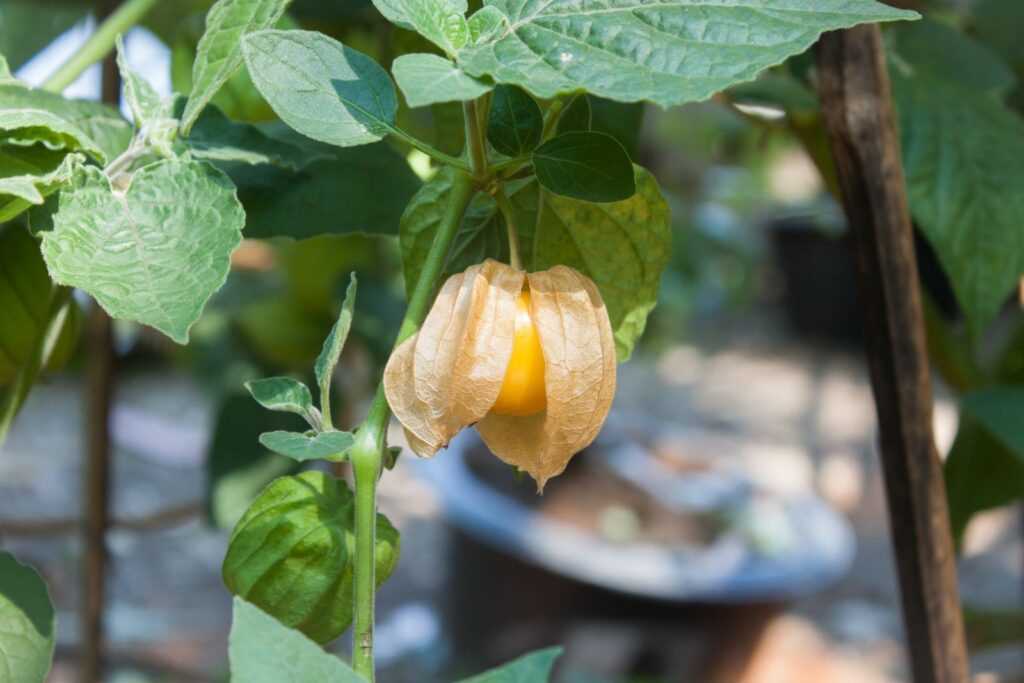
- Physalis plants are relatively resistant to most pests and diseases, but they can still be affected by aphids, caterpillars, and whiteflies. Apply organic pest control methods or use insecticidal soap to manage infestations.
- Fungal diseases, such as powdery mildew and leaf spot, can affect Physalis plants. Ensure good air circulation, avoid overhead watering, and promptly remove any infected plant material to prevent the spread of diseases.
8. Harvesting
Physalis fruits are ready for harvesting when they turn a vibrant golden or orange color. Gently twist or cut the fruit from the plant, being careful not to damage the delicate husk. Harvest regularly to encourage continuous fruit production.
9. Storing Physalis Fruits
Physalis fruits can be stored for several weeks if handled and stored properly. Remove any husks that are blemished or damaged and store the fruits in a cool, dry place. Do not wash the fruits until just before consumption.
10. Crop Rotation
To prevent soil-borne diseases and maintain soil fertility, practice crop rotation. Avoid planting Physalis or any other related plants, such as tomatoes or peppers, in the same location for consecutive growing seasons.
| Pests | Diseases |
|---|---|
| Aphids | Powdery Mildew |
| Caterpillars | Leaf Spot |
| Whiteflies |
Pests and Diseases Affecting Physalis Plants
Physalis plants are generally resistant to most pests and diseases. However, there are a few common issues that can affect their health and productivity.
Pests
1. Aphids: These tiny insects suck the sap from physalis plants, causing stunted growth and curled leaves. They can be controlled by regularly spraying the plants with a strong jet of water or by using insecticidal soap.
2. Whiteflies: These small, white insects can be found on the undersides of physalis leaves. They cause damage by sucking sap from the plant and can also spread diseases. Yellow sticky traps or insecticidal soap can be used to control whiteflies.
3. Spider Mites: These tiny pests often go unnoticed until the plants are damaged. They feed on the leaves, causing yellow spots, webbing, and leaf drop. Regularly spraying the plants with water can help control spider mites.
Diseases
1. Powdery Mildew: This fungal disease appears as a powdery white coating on the leaves and stems. It can stunt the growth of physalis plants and reduce their yield. Adequate spacing and good air circulation can help prevent powdery mildew.
2. Leaf Spot: Leaf spot is a fungal disease that causes dark spots on the leaves of physalis plants. It can weaken the plant and reduce its productivity. Removing infected leaves and providing proper ventilation can help control leaf spot.
3. Root Rot: Root rot is a common problem in physalis plants, especially in poorly drained soil. It is caused by fungal pathogens and can result in wilting, yellowing leaves, and stunted growth. Avoid overwatering and ensure good soil drainage to prevent root rot.
4. Bacterial Wilt: Bacterial wilt causes the sudden wilting and death of physalis plants. It is transmitted through infected soil or contaminated tools. Crop rotation and practicing good sanitation can help prevent the spread of bacterial wilt.
By regularly inspecting your plants and taking prompt action against pests and diseases, you can keep your physalis plants healthy and productive. Proper care, including providing adequate water, sunlight, and nutrients, can also help prevent the occurrence of these issues.
Harvesting and Storing Physalis
Physalis plants bear fruit that matures in the late summer or early fall, depending on the variety. It is important to know when to harvest the physalis fruits to ensure optimal flavor and texture. Here are some guidelines for harvesting and storing physalis:
Harvesting Physalis
- Physalis fruits are ready for harvest when the husk around the fruit turns papery and begins to dry out.
- Gently squeeze the husks to check if the fruits inside are firm and fully colored.
- Use scissors or pruners to cut the fruit-bearing stems just above the ground.
- Remember to wear gloves when handling physalis fruits, as the plants can sometimes cause skin irritation.
Storing Physalis
- Physalis fruits can be stored in their husks for several weeks in a cool, dry place. Simply remove any damaged fruits and place them in a breathable container or paper bag.
- Do not wash the fruits before storage, as moisture can cause them to rot.
- If you want to store physalis fruits for a longer period, you can remove them from their husks and freeze them. Spread the fruits in a single layer on a baking sheet and freeze until solid. Then transfer them to airtight containers or freezer bags.
- Frozen physalis fruits can be stored in the freezer for up to one year.
By following these guidelines, you can harvest and store physalis fruits to enjoy their unique and delicious flavor throughout the year.
Popular Uses for Physalis in Cooking and Medicine
Cooking Uses
Physalis, also known as Cape gooseberry or ground cherry, is a versatile fruit that can be used in a variety of culinary creations. Whether it’s used in sweet or savory dishes, physalis adds a unique flavor and vibrant color to any recipe. Here are some popular uses for physalis in cooking:
- Raw: Physalis can be enjoyed raw, either on its own or as a topping for salads, desserts, and yogurt. Its sweet and tangy flavor makes it a popular choice for fresh fruit arrangements.
- Jams and Preserves: Physalis is commonly used to make jams, jellies, and preserves due to its high pectin content. Its naturally tart flavor balances well with sweet ingredients, making it a great base for spreads.
- Pies and Tarts: Physalis can be used as a filling for pies and tarts, either on its own or combined with other fruits. Its bright orange color and unique taste make for an eye-catching and delicious dessert.
- Sauces and Chutneys: Physalis can be cooked down and used to make flavorful sauces and chutneys. These condiments can be paired with meats, cheeses, and breads to add a tangy and sweet element to a dish.
Medicinal Uses
Besides its culinary uses, physalis has also been used in traditional medicine for its potential health benefits. While more research is needed, here are some common medicinal uses of physalis:
- Antioxidant Properties: Physalis contains antioxidants, which help protect cells from damage caused by harmful molecules called free radicals. Antioxidants may have anti-inflammatory and anti-aging effects.
- Immune System Support: Some studies suggest that physalis may help support the immune system due to its high vitamin C content. Vitamin C is known to boost immune function and promote overall health.
- Anti-Inflammatory Effects: Physalis has been used in traditional medicine to help reduce inflammation and relieve symptoms of inflammatory conditions, such as arthritis.
- Vision Health: Physalis is a good source of vitamin A and beta-carotene, which are important for maintaining healthy vision. These nutrients may help protect the eyes from oxidative stress.
While physalis shows promise in its potential health benefits, it’s important to consult with a healthcare professional before using it as a medicinal remedy.
Questions and Answers:
What is physalis?
Physalis is a fruit-bearing plant that belongs to the nightshade family. It is known for its unique appearance and sweet-tart taste.
How do you plant physalis?
To plant physalis, choose a sunny spot in your garden and prepare the soil by adding compost or organic matter. Sow the seeds or transplant the seedlings, making sure to space them properly. Water regularly and keep the soil moist.
What types of physalis are there?
There are several types of physalis, including Physalis peruviana (Cape gooseberry), Physalis philadelphica (tomatillo), and Physalis ixocarpa (husk tomato).
When is the best time to harvest physalis?
The best time to harvest physalis is when the husks have turned yellow or brown and are dry to the touch. This usually occurs in late summer or early fall.
What are the care requirements for physalis plants?
Physalis plants require regular watering, especially during dry periods. They also benefit from a layer of mulch to help retain moisture in the soil. Pruning and staking may be necessary to support the plants as they grow.
Can physalis be grown in containers?
Yes, physalis can be grown in containers as long as the container is large enough and has good drainage. Select a variety that is suitable for container gardening and follow the same planting and care instructions as for plants grown in the ground.
Are physalis plants prone to any pests or diseases?
Physalis plants can be susceptible to certain pests and diseases, including aphids, whiteflies, and powdery mildew. Regular monitoring and proper hygiene practices, such as removing infected plant material, can help prevent and control these issues.







